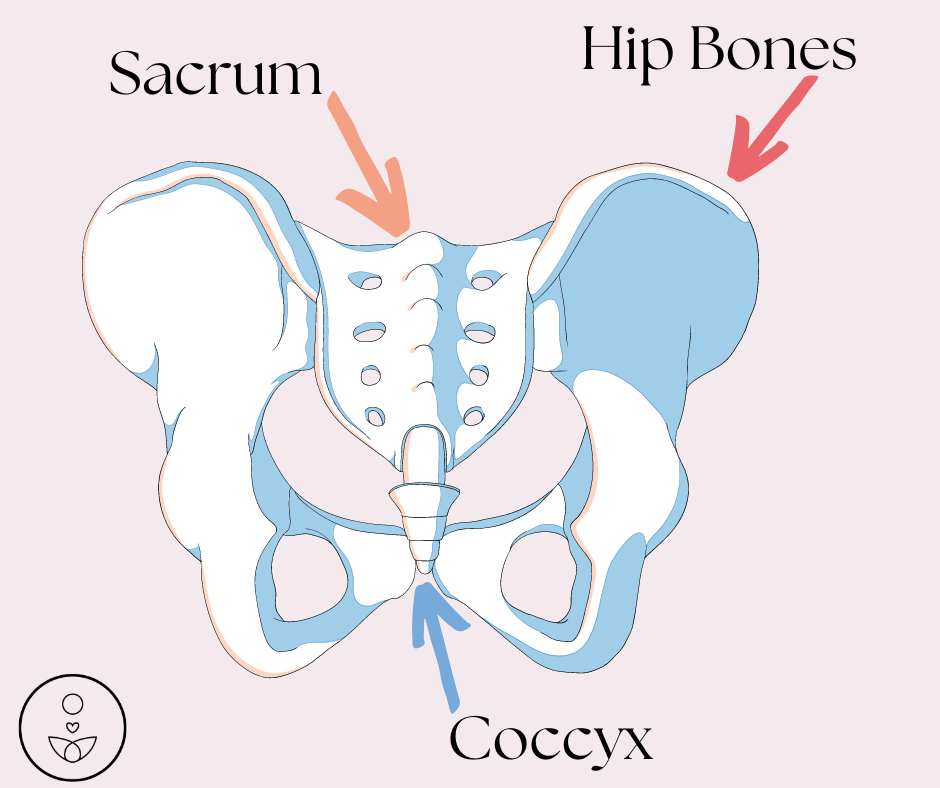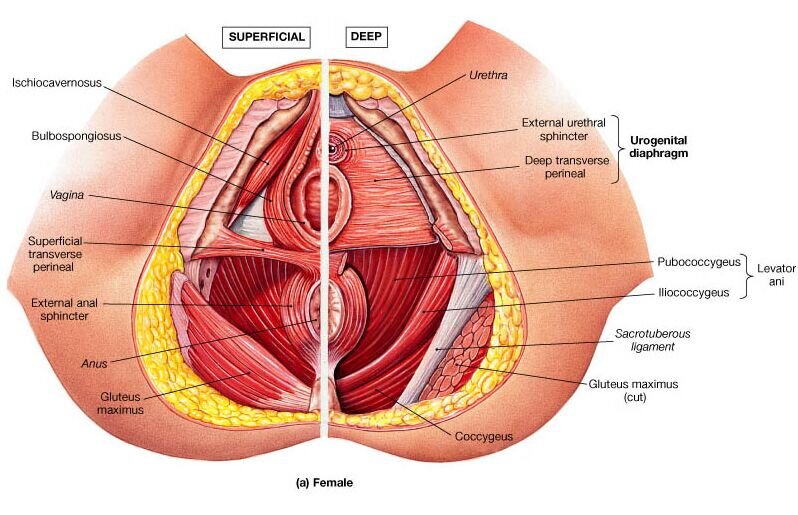|
Before we dive into what happens when the pelvic floor goes rogue and the symptoms associated with dysfunction, it’s important to understand its anatomy and how it functions when everything is working as it should be. It can be difficult to conceptualize the pelvic floor because you can’t physically see it, so let’s dive in! The pelvis itself is a bony structure that forms the base of the spine and supports the organs of the lower abdomen. This structure is comprised of the hip bones, what you feel of when you put your hands on your hips, the pubic bone, the hard bone at the very front of your pelvis, the sacrum, a triangular-shaped bone at the base of the spine, and the coccyx, a small bone at the base of the scrum, also known as the tailbone. The pelvic floor is a group of muscles that form a sling-like structure at the base of the pelvis, these muscles go from front to back and from side to. These muscles play a crucial role in supporting the pelvic organs including the bladder, uterus, and rectum, as well as controlling bowel, bladder, and sexual function. From SexMed Advocate: https://www.sexmedadvocate.com/hypertonic-pelvic-floor-dysfunction-vaginismus Now that we understand the basic anatomy of the pelvis and the pelvic floor, let’s discuss how the pelvic floor functions, if everything Is working as it should. When the pelvic floor muscles contract they move up and in, this contraction closes any openings your anatomy has. For males, this would mean the anal opening and for females this would mean the vaginal opening, urethra, and anal opening. This is all to say, you should be unable to pee, poop, or insert anything into any of these openings, if the pelvic floor is contracted or the “door is closed”. When the door, or the muscle, “rests”, imagine how your shoulders are “resting” when you’re just standing normally, it should be resting in a closed position. The muscles are not working or actively doing anything, they’re just sitting still. In this state, nothing should be able to exit or enter the pelvis. The final function of the pelvic floor muscle is the action of moving down and out. When this is the case, the muscle is open, ideally this would mean anything could move in or out at will. When the muscle is in this position you should be able to pee or poop comfortably and without issue. This position is also what allows anything to enter that you so please, males should be able to get a prostate exam, females should be able to have a vaginal exam, put in a tampon, and anyone should be able to have intercourse freely and without pain. In a perfect world, this is how the pelvic floor should function. If you have any questions about this information give our office a call or send us an email, we would love to help! Want more knowledge on the topic? Watch the video below for additional information on the anatomy and function of the pelvic floor.
0 Comments
Leave a Reply. |



 RSS Feed
RSS Feed